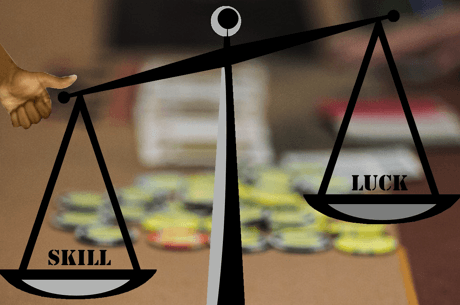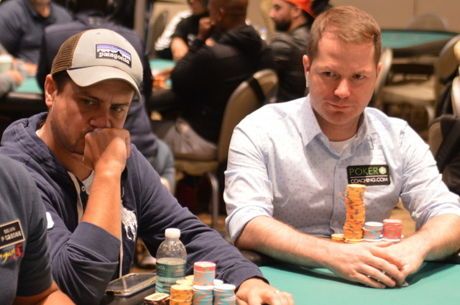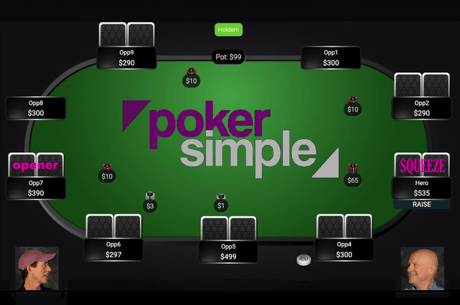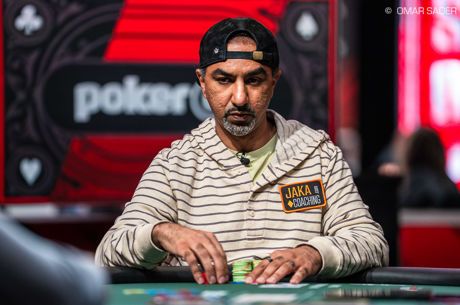The Temptation to Play it Safe in Poker Tournaments
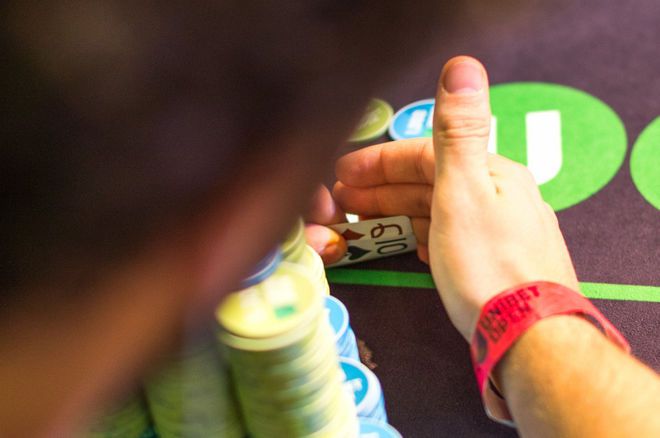
Often in a no-limit hold'em tournament, you'll have to put your tournament life at risk. Sometimes you'll have to make such a commitment in an unclear spot.
Obviously when you're short-stacked this will happen frequently. It's also easy enough to intuit that it should not be happening that much when you are deep-stacked and can afford not to take such risks.
It's those "in-between" stack sizes that can be a difficult balance. Sometimes with a medium stack you might be tempted to play it safe and call or fold when in fact the highest-EV options are to raise or shove �� that is to say, the best options are the ones that will on average bring the most reward but will also lead you to go broke more often than the other, "safe" options.
Let's look at a real hand from a real tournament to illustrate just what I mean.
Getting Involved Versus the Big Stack
We're playing a $400 no-limit hold'em freezeout, a side event, and from a field of about 100 players only 25 remain. The top 12 make the cash, and we have a stack of 55,000 at 600/1,200 �� almost 46 big blinds. Too many chips to be going broke? Let's see.
It folds around to the button who has a truly massive stack, something over 100,000, and he raises to 3,200. The small blind folds and we defend from the big blind with A?8?. Our hand does not play that well after the flop, but it is simply too strong not to play here, one way or another.
The flop comes Q?10?5? to give us some backdoors with an overcard, and ace-high might still be good. We check, and our opponent bets 4,000 or about half-pot.
This seems close. Against passive opponents it seems a good spot to fold now. Against opponents who continuation bet every time they see a flop, calling is viable, assuming you know they will slow down.
Our opponent is one of the only players in this tournament who seems to know the hand rankings top to bottom and is playing a tight-aggressive style. That's also a good argument for getting out of the way, but it wouldn't be much of a teachable hand if we folded now. Calling was probably a small mistake and it compounds into a dicey situation on the turn.
The Best Card in the Deck?
The turn is the J?, making the board Q?10?5?J? and improving our hand's potential enormously. With our A?8? we now have the nut flush draw, and can also make a straight on a king or a nine. We also still have an overcard that could be good against a hand like T-9 or Q-9.
Leading is an option here. For one thing, we should have a lot more flushes in our range than our opponent does, as we call more disconnected suited hands preflop and he raises more offsuit hands. But those offsuit hands are more often high cards, and there are now three on the board, so these rules of thumb are not going to reveal whose range is actually stronger here.
If we plug matters into a solver I would imagine that the button still has the advantage. He has more straights (every K-9, every A-K, most if not all 9-8) and sufficient flushes. Plus his range includes a greater concentration of two-pair hands and all of the sets, too, while we only have bottom set.
In order to lead at this card, we need to have a range advantage such that our opponent is not dismissive enough of our range's grasp on the board to bluff or semi-bluff raise us.
In other words, when a card obviously hits us, and we lead, our opponents can recognize the threat and react honestly �� raising when they have it and calling or folding when they don't. But on a card like this, one that completes A-K especially, they might be under the impression that this board is for them, not us.
So we check and our opponent bets 7,000 into about 16,000. What to do?
Playing it Safe is Too Tempting
In this spot we have a hand that is live against anything. There are a lot of strong hands we could be facing �� sets, flushes, straights, two pair �� but despite that we are always still going to have outs.
For many players, the most tempting line of reasoning in spots like this one goes something like "I do not want to play a big pot against a strong player in a tournament with many weak players remaining." Also, the thought "I have too many chips to go broke in this spot" usually comes up as well.
Just calling is too tempting in this spot. We are persuaded by the comfort of knowing we will be dealt into the next hand no matter what. If our opponent is strong, he will be betting this card more often than will a passive opponent. However, we put a ton of their hands, hands like A-A, Q-9, and K-Q, in a squirm if we raise all in.
We can shut certain hands out of the pot. We also solve the river ahead of time. How are we going to get paid when we make the best hand when the river brings a nine, king, or club, when it is obvious to a set that it has been drawn out on? Also, the reasoning that it is too many chips with which to move all in is going to affect our opponent as much as us. It may be too many chips to call off with A-Q.
Poker tournaments are about survival, yes. But they are also about knowing when to take what are in truth profitable risks when you are in spots like this one. Or, say, when you're sitting in fourth position out of eight players at a final table. Sometimes with a medium stack, you just have to go for broke.

